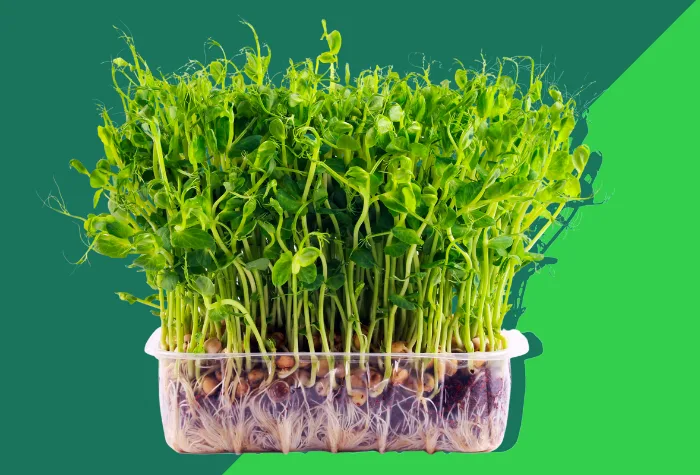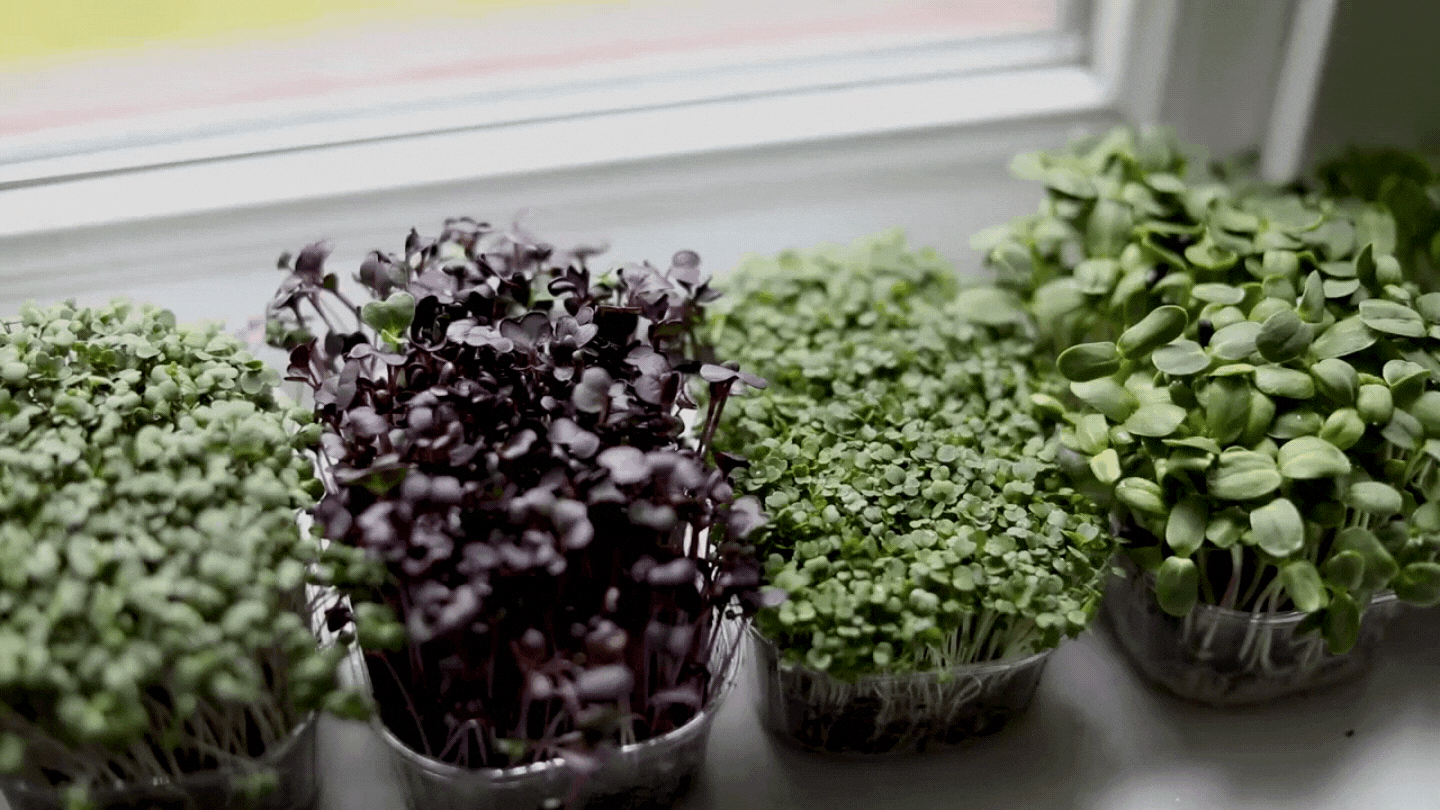
Microgreens: The health food trend that could provide global nutrition security
When it comes to microgreens, a little goes a long way.
Microgreens aren't new, showing up on dinner plates as early as the 1980s. But the tiny plants are growing in popularity among health and environmentally-conscious consumers who are looking for affordable and healthy nutrition sources.
You're probably going to see the term 'microgreen' popping up more and more as the trend picks up steam. It's a marketing (read: not scientific) word used to characterize small, edible greens that germinate in soil or in a soil-like substitute from veggie and herb seeds.
Their taste varies from spicy to bitter, and they can be used to add another flavour layer and additional nutrition to soups, salads, sandwiches - or just about anything else you're planning to eat.
They aren't sprouts, which have a growing cycle of about 2-7 days. Microgreens are typically harvested between 7 and 21 days after germination, once the first true leaves have appeared.
FOOD SECURITY
In late September, an international team of researchers published a paper on the benefits of microgreens, concluding the small plants have the potential to "help provide global nutrition security," due to their ability to be quickly grown in various soilless settings, in small spaces, and with or without artificial lighting.
Take, for example, a situation where a major storm renders roads impassable and destroys infrastructure. We saw this play out in 2017 in Puerto Rico when Hurricane Maria slammed the area, causing billions of dollars in damages, knocking out power to millions, and killing thousands.
Microgreen kits could become an invaluable resource to people in these scenarios, who are forced to rebuild with intermittent access to electricity and clean water.
When communities are plagued by persistent floods, droughts, or fires, the impact on agriculture can be devastating. These nutritional losses could be offset, at least in part, with microgreens. Another bonus: they can be grown throughout the winter.

Microgreens come in several varieties (Getty Images).
And their benefits aren't exclusive to humans here on Earth: NASA is currently testing the viability of microgreens in space, in hopes of using them to provide nutrition during long-duration expeditions, like missions to Mars.
Study author Francesco Di Gioia, assistant professor of vegetable crop science at Penn State, tells The Weather Network that his idea for microgreens as a security nutrition source sparked when he experienced hurricanes Irma and Maria while living in Florida, and the paper comes at a time when COVID-19 has disrupted global food chains, outlining how the tiny plants could alleviate some of the strain in future emergency situations.
HEALTH BENEFITS OF MICROGREENS
"You can get the same type of nutrition from microgreens as you can from other vegetables," Di Gioia tells The Weather Network, "but what is different is the nutrition density, and also the bioavailibility. We can create mixes of microgreens, so you will have different species that could provide more nutrients than a single species, or a standard vegetable."
Seeds can be harvested from most veggies, including cauliflower and broccoli, lettuce, dill, carrot, garlic, spinach, and squash.
Microgreens are loaded with nutrients, and research suggests some varieties are high in antioxidents, which can help reduce the risk of developing many diseases and conditions.
A variety of seeds can produce an array of microvegetables that address specific dietary needs, Di Gioia says.

When it comes to growing microgreens, seeds will likely be one of the biggest start-up costs. (Getty Images Pro)
TOOLS FOR GROWING MICROGREENS
One of the benefits of growing your own microgreens is affordability.
"The main cost of growing microgreens is the seeds," Di Gioia says. The growing medium can be soil or a regular peat mix that's bought in garden centres, but microgreen distributors offer more specialized options as well.
If you'd like to try growing your own, here's what you need, courtesy of Penn State:
Seeds - Di Gioia says it's best to use seeds intended for microgreening, purchased from a microgreen retailer, to avoid the risk of contamination.
Drinking water.
A growing medium or mat.
Growing containers or trays.
A small kitchen scale or measuring cups.
A spray bottles and a pitcher.
A sharp knife or a pair of scissors.
You can get a full breakdown on how to grow microgreens - from seeding to harvest - on the Penn State website.
If home-growing isn't your thing, sprouted mircogreens can be purchased from grocers and other vendors.
This report was produced by Kevin Clarke.
Thumbnail image created by Cheryl Santa Maria. Image source: Manyakotic/Getty Images Pro/Canva Pro.
